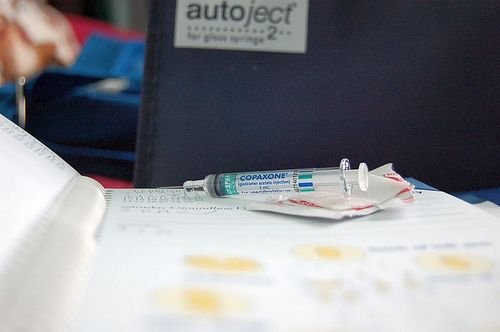
Copaxone is a synthetic, injectable medication for relapsing-remitting MS. On the market since 1996, glatiramer acetate (its generic name) has been proven to reduce the rate of relapses in some multiple sclerosis patients by about 30 to 40%. It has also been proven to reduce the amount of new MS lesions a patient may develop, thereby slowing the amount of accumulated disability. Copaxone’s chemical composition is supposed to mimic actual proteins in the body, and it is thought to lure an immune system attack away from real protein-based myelin, or nerve coverings. Like any other MS medication, *Copaxone is not a cure for multiple sclerosis, and it is not always effective in every patient.
Copaxone Advantages
- this medication is not an interferon, so it does not create the flu-like side-effects that are common with interferon drugs (Avonex, Betaseron, and Rebif)
- injections come conveniently premade
- Copaxone has over 10 years’ worth of proven effectiveness
- this medication does not cause depression or liver/thyroid dysfunctions like interferon medications can
Copaxone Drawbacks
- Copaxone is a daily injectable– it has the most amount of administrations out of all the disease-modifying injectable meds
- Copaxone needs to be kept refrigerated during certain circumstances
- this medication can pose several (rare but brief) side-effects: chest tightening, anxiety, shortness of breath, and flushing just after administration. It can also cause injection site reactions: redness, swelling, itching, and pain
*any decision to take medication should be thoroughly discussed with your doctor
References: All About MS- Copaxone, The U.S. Food and Drug Administration, Nat’l MS Society (U.S.)

